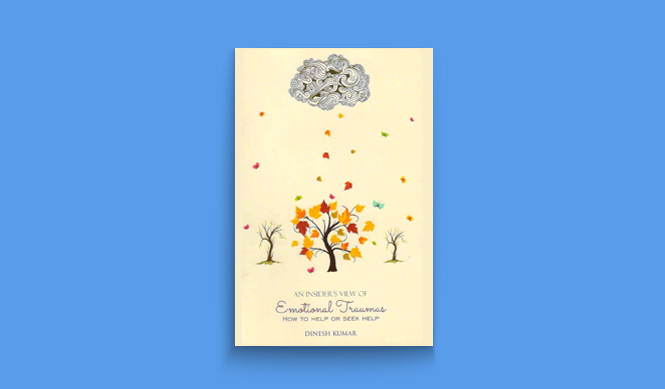 Book: An insider’s view of emotional traumas: how to help or seek help
Book: An insider’s view of emotional traumas: how to help or seek help
Author: Dinesh Kumar
Publisher: Leadstart Publishing Pvt Ltd, Mumbai
Launch: 2014
Author Dinesh Kumar, a mental health counsellor since 20 years, combines his wealth of professional experience, anecdotes from real life cases, experts’ views and his personal charm in this book on counselling.
Acknowledging the need for both non-specialised counselling and specialised psychiatric care, Kumar builds a good case for treating ‘mental sprains’ with the former, as they form the bulk of mental health cases that require professionals’ attention. He leaves the ‘mental fractures’ – serious mental disorders – to be taken care of by specialists. This book is primarily directed towards the lay person, although it can very well serve as a handy guide for counsellors and psychologists to learn from.
The source of inspiration
Kumar packs in a wide range of issues that he has encountered in his practice over the years in his book, and yet manages to keep it under 200 pages. He sets the tone right at the beginning with a brief introduction to psychotherapy in which he declares M Scott Peck, the eminent US psychiatrist and the author of The Road Less Travelled, to be his unofficial guru. Peck, Kumar points out, combined psychotherapy with love, traditional values, and spiritual growth – something that Kumar himself appears to have practised in his professional life. He further quotes Peck to drive home this point: A minimally trained therapist who exercises a great capacity to love will achieve psycho-therapeutic results that equal those of the very best psychiatrists.
Parts of the book
The first part consists of cases and their consequences from Kumar’s practice. While talking about the cases, Kumar shares nuggets of information from his experience, and points out the ideal attributes of an effective counsellor – empathy being the prime requirement. Adolescent problems, marital issues, depression, anxiety, grief reaction and substance misuse are addressed through the case examples, while touchy subjects such as suicide and child sexual abuse are dealt with sensitively.
The second part is a spreadsheet of mental issues, with further examples and opinions on the conditions discussed earlier. Kumar highlights two important issues that are central to most cases of ‘mental sprain’: relationship difficulties and low self-esteem. He talks of a spiritual but secular approach during psychotherapy as an answer to most of these issues, especially those pertaining to failed expectations, anger, anxiety and dependence. His advice on coping with anxiety – to observe the phenomena occurring in the body and mind without acting out – is reminiscent of Panache Desai’s advice of letting negative emotions run through the body like a river from his book, Discovering Your Soul Signature.
Kumar rightly advocates taking the non-judgmental approach in dealing with cases such as drug dependence, and reveals that listening to the inner voice may be required to resolve difficult cases. He recommends terminating counselling when it is not bringing forth resolution and reducing the dependence of the client on the therapist. The third part includes details of common mental illnesses, including a table of personality types and their typical features. The book concludes with a list of counselling centres and their contact details.
A few minor issues
Apart from the inevitable printing errors – extra letters and missing/misplaced words – there are a few other minor issues to grouse about, if one were to nit-pick. For example, some of the issues covered in the second part are repeats of issues covered in the first part. More importantly, how does one provide hope to a person with terminal illness, or for that matter, to his family? How does one address the cynicism that can set in towards clients and their stories after years of continuous work in the counselling field? These could have been touched upon in the book.
Kumar also advocates staying away from passive-aggressive and narcissistic personality disorders. Instead of totally disengaging, since these conditions cannot be effectively addressed by the use of medication, but on the other hand predominantly require a psychosocial approach, referring them to a trained psychologist would be a much better advice.
Nevertheless, this book covers a lot of difficult issues whilst avoiding the jargon of therapists, thus making it a must read for lay people interested in mental health issues, apart from counsellors and therapists. This brave but simple book attempts to encourage disclosure of mental health issues, reduce stigma associated with seeing a mental health professional, and add to the knowledge and skill of those involved in caring for people with these issues.




